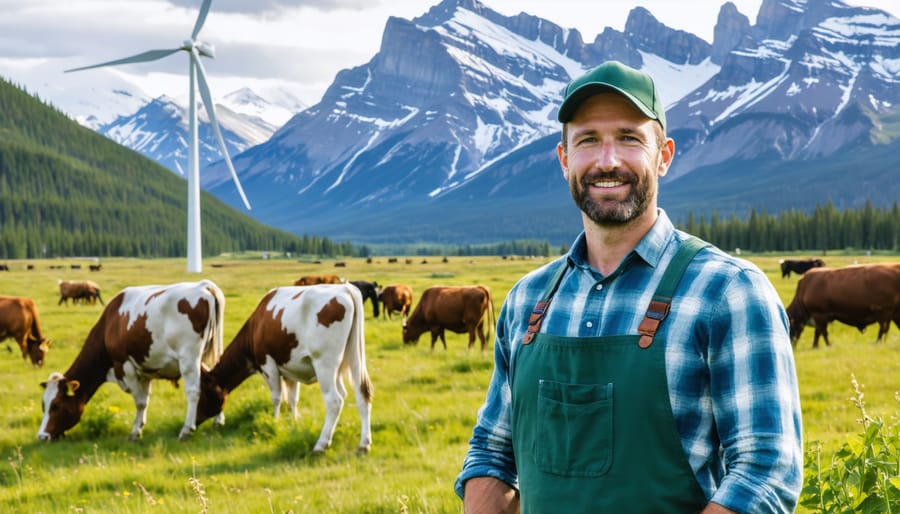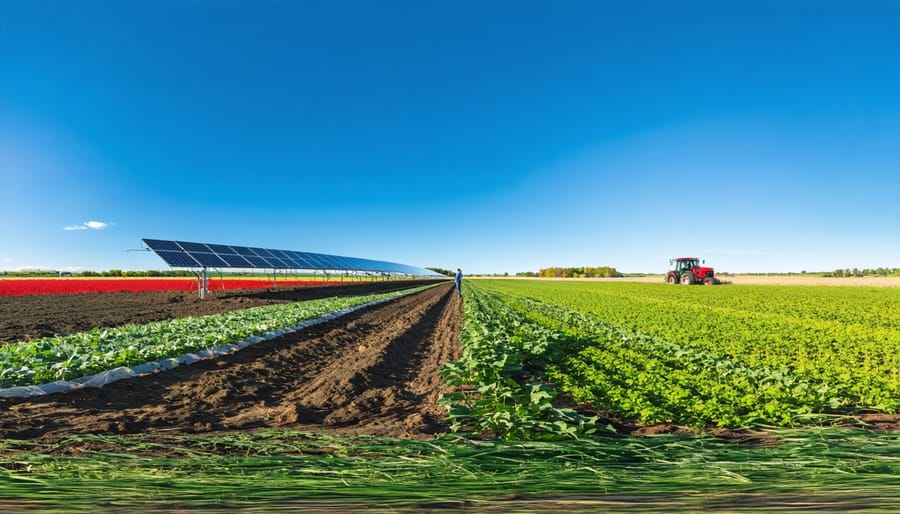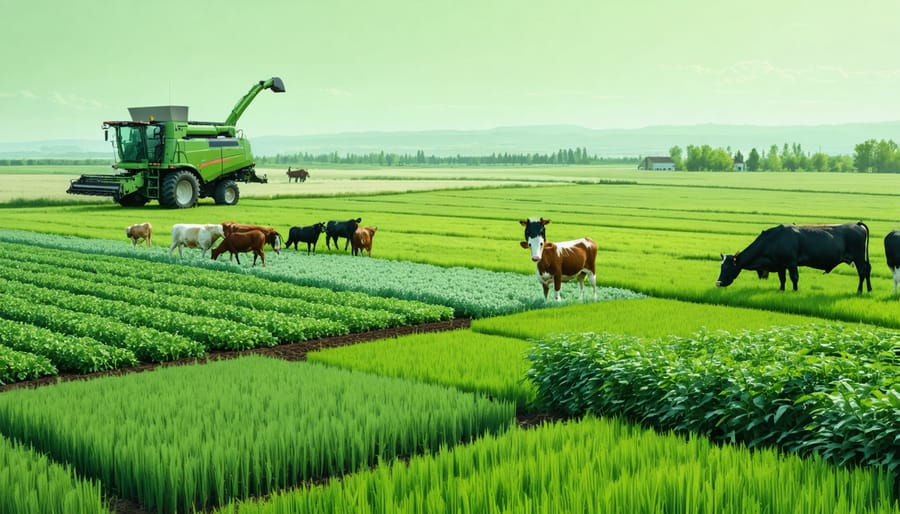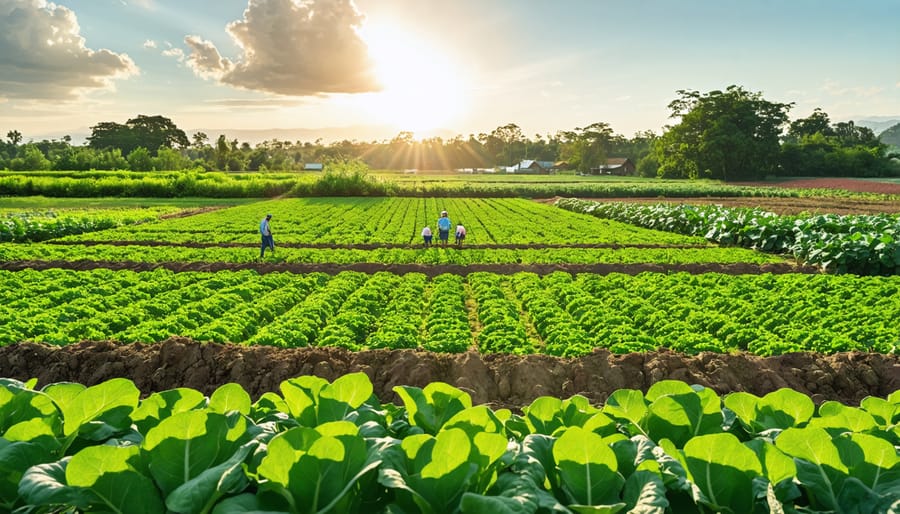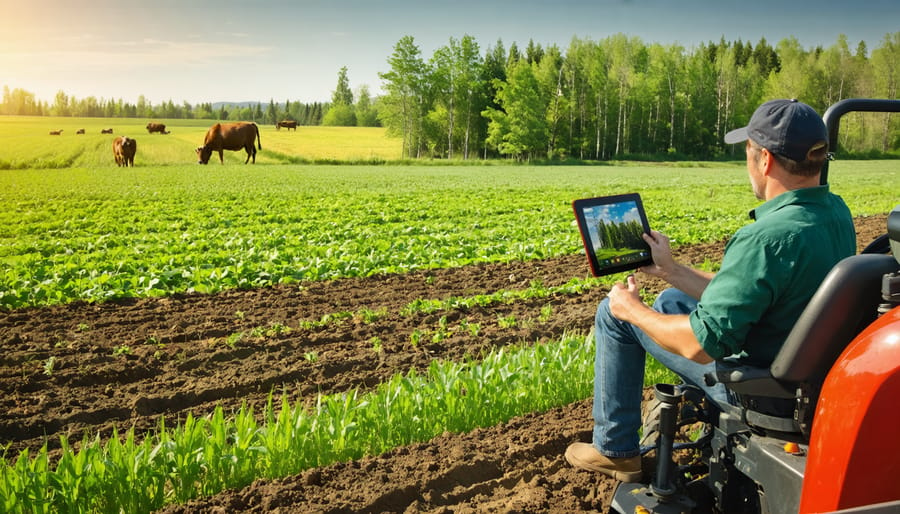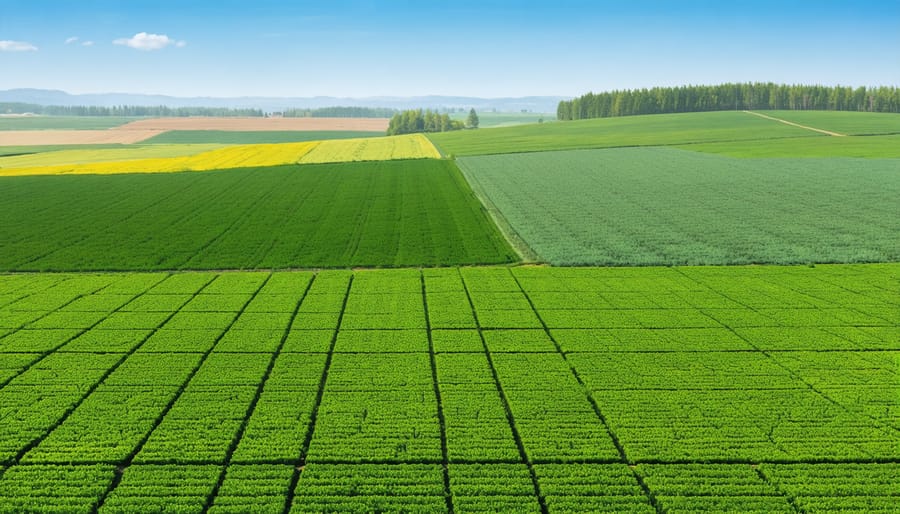Conservation agriculture is a sustainable farming approach that focuses on three core principles to enhance soil health, improve crop yields, and protect the environment. By minimizing soil disturbance, maintaining permanent soil cover, and diversifying crop rotations, farmers can build resilient agroecosystems that are better equipped to withstand climate change and other challenges. This article explores how conservation agriculture concentrates on these key principles and provides practical insights for Alberta farmers looking to adopt more sustainable practices on their land.
Minimal Soil Disturbance
No-Till Farming Techniques
No-till farming practices are gaining traction among Alberta farmers as a key component of conservation agriculture. Instead of traditional plowing, no-till involves direct seeding into the previous crop’s residue, minimizing soil disturbance. This approach helps maintain soil structure, reduce erosion, and preserve moisture. One successful example is the adoption of organic no-till farming by a group of farmers in central Alberta. By combining cover cropping, crop rotation, and minimal tillage, they have improved their soil health and reduced their reliance on inputs.
Another effective no-till practice is the use of high-residue cultivators or blade plows that slice through crop residue without inverting the soil. This allows for shallow cultivation while maintaining surface residue. Many Alberta farmers have found success with this method, particularly in managing heavy crop residue and controlling weeds.
The use of multi-species cover crops is also gaining popularity among no-till farmers in the province. By planting a diverse mix of crops during fallow periods, farmers can protect the soil, suppress weeds, and add organic matter. A successful example is a farmer near Edmonton who has been using a blend of legumes, brassicas, and grasses as a cover crop in his no-till system, resulting in improved soil fertility and reduced fertilizer costs.
Adopting no-till practices requires a shift in mindset and management, but the long-term benefits for soil health and sustainability are well worth the effort. By sharing knowledge and experiences, Alberta farmers can continue to innovate and refine their no-till techniques, building a stronger, more resilient agricultural community.
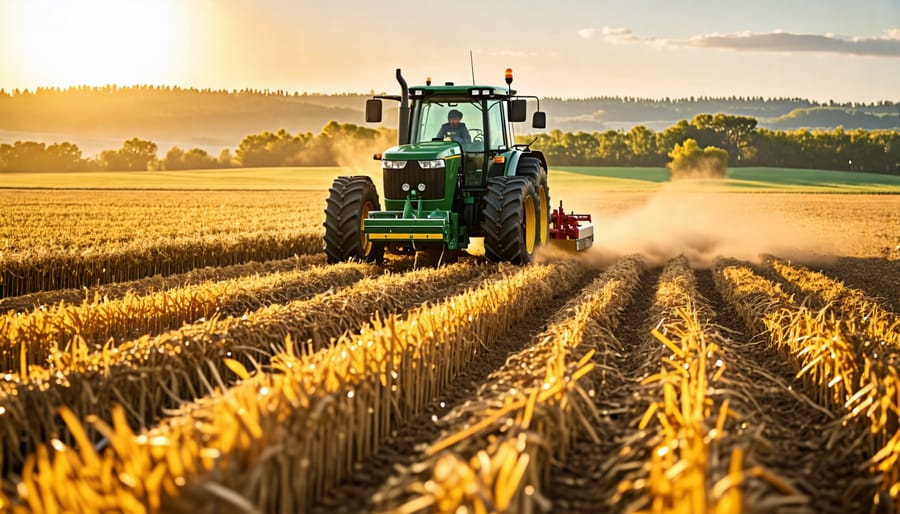
Overcoming Challenges
Minimizing soil disturbance in conservation agriculture can present challenges, but overcoming them is essential for maintaining soil health and productivity. One common obstacle is the need for specialized equipment, such as no-till seeders or direct drills, which can be expensive. To address this, consider sharing equipment with neighboring farms or seeking government grants and subsidies for adopting conservation practices.
Another challenge is managing crop residue, which can interfere with planting and germination. Proper residue management techniques, like using a stripper header during harvest or planting cover crops, can help break down residue and improve soil structure. Weed control can also be more difficult without tillage, but integrating diverse crop rotations, cover crops, and targeted herbicide application can effectively suppress weeds.
Overcoming these challenges requires a proactive, adaptive approach and a willingness to learn from others in the conservation agriculture community. With persistence and innovation, Alberta farmers can successfully implement these practices and reap the long-term benefits of healthier, more resilient soils.
Permanent Soil Cover
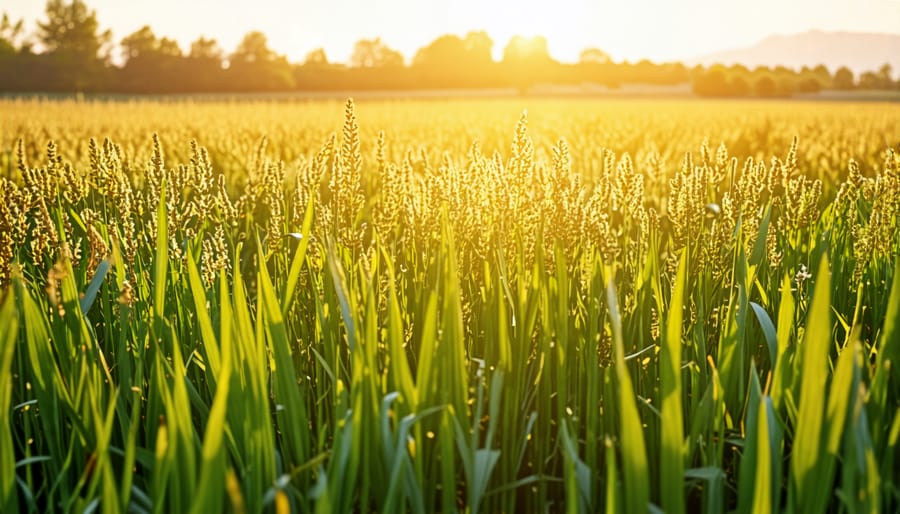
Selecting Cover Crops for Alberta’s Climate
When selecting cover crops for Alberta’s climate, it’s essential to consider species that can thrive in the region’s unique conditions. Look for varieties that are cold-tolerant and can withstand the province’s harsh winters, such as winter rye, hairy vetch, and crimson clover. These species establish quickly in the fall, providing excellent ground cover and erosion control.
For spring and summer cover crops, consider fast-growing options like oats, barley, and field peas. These crops can be planted after early harvests and help suppress weeds, fix nitrogen, and improve soil structure. Brassicas, such as radishes and turnips, are also excellent choices for their deep taproots that break up compacted soils and scavenge nutrients from lower soil layers.
When planning your cover crop mix, aim for diversity to maximize the benefits. A combination of grasses and legumes can provide both nitrogen fixation and biomass production, while brassicas can add soil aeration and nutrient cycling. Consult with local agricultural experts, such as extension agents or experienced farmers, to determine the best cover crop species and mixes for your specific soil type, cropping system, and management goals. By carefully selecting cover crops suited to Alberta’s climate, you can enhance soil health, reduce erosion, and improve the overall resilience of your farming operation.
Managing Crop Residues
Managing crop residues effectively is key to successful conservation agriculture. Instead of removing or burning residues, consider leaving them on the soil surface to protect against erosion, moderate soil temperature, and conserve moisture. Aim for a residue cover of at least 30% at the time of planting the next crop. Chopping or shredding residues can help with even distribution and faster decomposition. However, be cautious not to over-till, as this can disrupt soil structure and beneficial microorganisms that help revitalize your soil. If residue levels are too high and hinder planting, consider baling some of the excess or using a residue manager attachment on your planter. With careful management, crop residues can be a valuable tool in your conservation agriculture arsenal, contributing to improved soil health and long-term productivity.
Crop Rotation
Designing Effective Crop Rotations
When designing effective crop rotations for conservation agriculture in Alberta, it’s essential to balance economic viability with ecological sustainability. Start by assessing your farm’s unique characteristics, such as soil type, climate, and market demands. Consider incorporating a diverse mix of crops, including cereals, oilseeds, and legumes, to promote soil health and break pest cycles.
Legumes like field peas, lentils, and alfalfa can fix atmospheric nitrogen, reducing the need for synthetic fertilizers. Aim for a rotation that includes at least one legume crop every three to four years. Additionally, plan your rotation to alternate between shallow and deep-rooted crops to optimize nutrient and water uptake from different soil layers.
To maximize economic returns, research market trends and consider high-value crops suitable for your region. However, avoid relying too heavily on a single cash crop, as this can lead to soil depletion and increased pest pressure. Instead, strive for a balance between profitable crops and those that contribute to long-term soil health.
When transitioning to a new rotation, be patient and allow time for the soil to adapt. Regularly monitor soil health indicators, such as organic matter content and nutrient levels, and make adjustments as needed. Seek advice from local agricultural extension services, experienced farmers, and conservation groups to refine your rotation plan.
Remember, an effective crop rotation is an ongoing process that requires flexibility and adaptation. By prioritizing soil health and biodiversity while considering economic factors, you can develop a sustainable and profitable rotation that benefits both your farm and the environment.

Integrating Legumes and Cover Crops
Integrating nitrogen-fixing legumes and cover crops into crop rotations offers numerous benefits for soil health and productivity. Legumes, such as field peas, lentils, and fava beans, form symbiotic relationships with soil bacteria that convert atmospheric nitrogen into a plant-usable form. This natural fertilization process reduces the need for synthetic nitrogen inputs. Cover crops, like clover, alfalfa, and vetch, protect the soil from erosion, suppress weeds, and enhance soil structure when grown between main crop seasons.
By incorporating these plants into rotations, Alberta farmers can improve soil fertility, break pest and disease cycles, and increase biodiversity. Legumes and cover crops also contribute valuable organic matter to the soil when their residues decompose. To maximize benefits, consider factors like local climate, soil type, and main crop compatibility when selecting species. Consult with agricultural extension services or experienced farmers in your community for guidance on the best options for your farm.
Conclusion
In conclusion, conservation agriculture offers a sustainable and effective approach to farming that promotes soil health, water conservation, and long-term productivity. By adopting the three core principles of minimal soil disturbance, permanent soil cover, and diverse crop rotations, Alberta farmers can reduce erosion, improve soil structure, and enhance nutrient cycling. These practices not only benefit the environment but also lead to increased crop yields and reduced input costs over time.
Implementing conservation agriculture requires a shift in mindset and management practices, but the long-term benefits make it a worthwhile investment. Farmers who have adopted these principles have reported improved soil quality, better water retention, and increased resilience to weather extremes. Additionally, conservation agriculture can help mitigate the effects of climate change by sequestering carbon in the soil and reducing greenhouse gas emissions.
As stewards of the land, Alberta farmers have a unique opportunity to lead the way in sustainable agriculture. By starting small and gradually incorporating conservation agriculture practices into their operations, farmers can build a more resilient and profitable future for their farms and communities. With the support of agricultural organizations, government programs, and fellow farmers, the transition to conservation agriculture can be a rewarding and impactful journey.
We encourage all Alberta farmers to explore the benefits of conservation agriculture and consider how they can start implementing these principles on their farms. By working together and sharing knowledge, we can build a more sustainable and vibrant agricultural sector that will thrive for generations to come.



